MXA INTERVIEW: CHUCK SUN WANTS TO BE WHERE THE RIDE IS AT
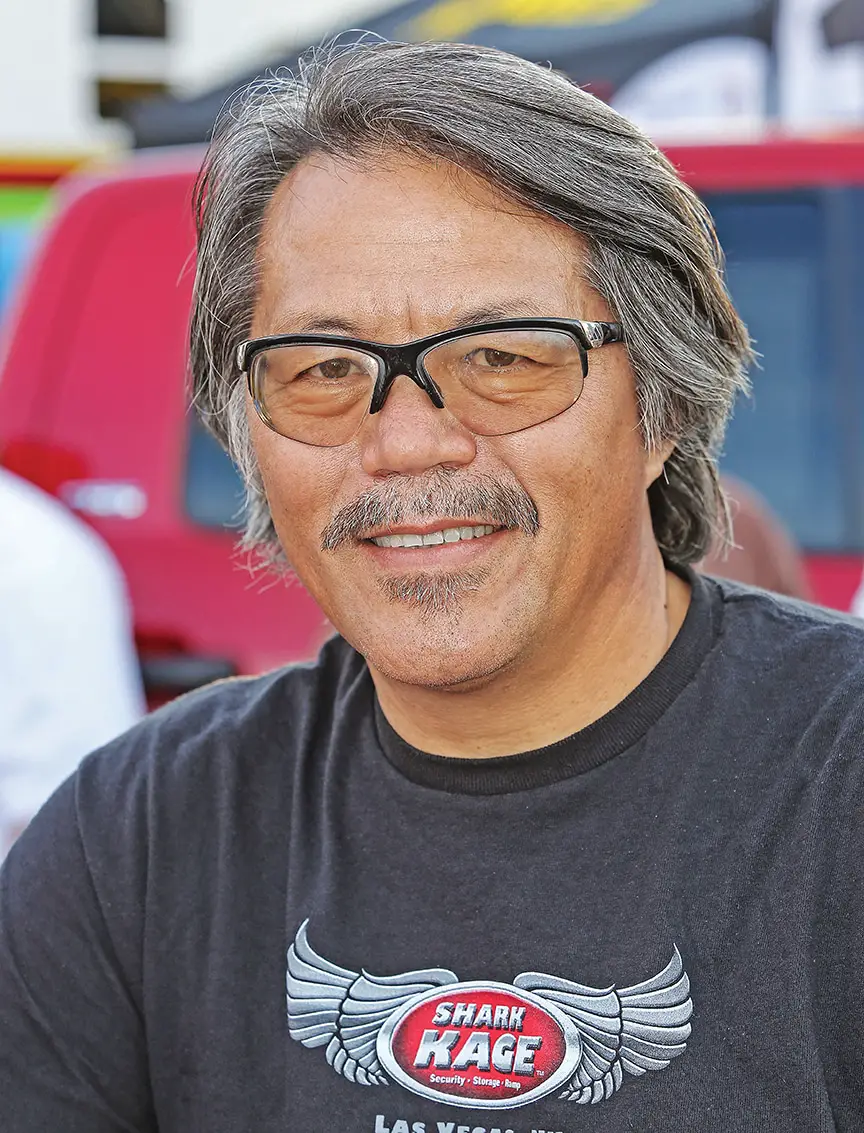 Chuck Sun was not only the 1980 AMA 500 National Champion, but he was a member of the first-ever Team USA to win the MXDN in 1981.
Chuck Sun was not only the 1980 AMA 500 National Champion, but he was a member of the first-ever Team USA to win the MXDN in 1981.
BY JIM KIMBALL
CHUCK, I HAD HEARD THAT THE MOVIE “ON ANY SUNDAY” INSPIRED YOUR DIRT BIKE CAREER. Yes. “On Any Sunday” played a huge role. It was an amazing movie to watch. I had just learned how to ride a mini-bike before the movie came out. When I watched the movie, it planted the bug. It played in a Portland theater, and I thought it was incredible. That eventually led to my very first motocross race at the age of fourteen.
WHAT WAS YOUR FIRST DIRT BIKE? I would go with my dad to the auto parts store, and they had all these toys about eye level. I saw a mini-bike and said, “Man, that is me.” It was about $100. It was a Cat mini-bike with a Briggs and Stratton engine. We had a couple of acres that had trails that were big enough to ride on. I went through a couple little bikes, like a Honda Mini Trail, and that led to a full-size Kawasaki 100 Centurion.
WASN’T THAT A FLAT-TRACK BIKE? It was a dirt track bike, but I could hill-climb with it. I was lightweight, and I would get the thing spooled up to a high rpm and climb these huge hills. It was fun. This was about the time that scrambles began to transition into motocross.
TELL US ABOUT YOUR FIRST MOTOCROSS RACE. A Kawasaki 250 was the very first bike that I lined up with. It was a memorable day. I did not have a number, so at the sign-up window the lady asked, “What is your number?”
I said, “I don’t have one.” She asked me how old I was, and I replied, “Today just happens to be my 14th birthday,” so 14 was my number.
DID YOU REALIZE THEN THAT MOTOCROSS WAS WHAT YOU WERE DESTINED TO DO? I was absolutely overwhelmed by the whole experience. Growing up in a rural community, I was a shy kid. I was the only kid in my school that had an Asian look about him. That left me very quiet without a lot of social engagement. Getting on a dirt bike was my introduction to the world. I was controlling this bike by myself. I was choosing what to do with it. Nobody was telling me what to do.
The dirt bike community was a reprieve from all the social pressure. There was no social hierarchy in motocross. Suddenly, I was free from all of that, and that probably holds true to this day.
“I WOULD GO WITH MY DAD TO THE AUTO PARTS STORE, AND THEY HAD ALL THESE TOYS ABOUT EYE LEVEL. I SAW A MINI-BIKE AND SAID, “MAN, THAT IS ME.” IT WAS ABOUT $100. IT WAS A CAT MINI-BIKE WITH A BRIGGS AND STRATTON ENGINE.”
DID YOU RIDE DIFFERENT BIKES OTHER THAN KAWASAKI? The Kawasaki went away, and I jumped on a Yamaha for a little bit. Later, I was on a Maico, then a Bultaco. I was riding the amateur class, and the guy that laid out Washougal the very first time, Bob Leach, took me under his wing. He and Bill Cook were outstanding riders, and when the Inter-Am came to the Northwest, those guys ran with the Europeans. Those were the two guys I modeled myself after. Bob was a smooth, squared-off Husqvarna rider. Bill was on a Maico with a “back it in” dirt-track style.
So, I took a little of both of those guys’ style—the sliding aspect of Bill Cook’s Maico and of Jim Pomeroy’s Bultaco—and was able to transition it into the square-up Husky riding style later.
BACK THEN, EVERY MOTOCROSS BRAND HAD THEIR OWN UNIQUE CHARACTERISTICS. That was a very interesting thing about 1970 bikes. CZ had its own character. I thought the CZs went through berms incredibly well. Every bike had its own personality, but the rider had to recognize its best assets and adapt it to go the quickest. The bikes nowadays have only the slightest difference between them.
WERE YOU RACING A LOT? In the summer in Oregon it was insane. We raced Wednesday night in Albany, Oregon, and Thursday night at Portland International Raceway. That was the big purse-money race. Friday I would be at the Woodburn Dragstrip for a night motocross. Saturday would be a day race at Fox Hollow in the Woodburn, and on Sunday it was Washougal.
WITH THAT SCHEDULE, YOU HAD TO BE IN GREAT SHAPE. We raced ourselves into shape, and racing was all we did. It was everything we could do to keep the bikes running during the season. At the end of the season, motorcycle racing came to a screeching halt, and it was dead in the winter. But, it was only for a few months before we were slopping around in the mud.
I started to make my mark in the Trans-AMA series, thanks to my experience with riding in the mud. I always felt like I had an edge on the guys from Southern California when it rained. At night, whether sleeping in a hotel room or in the rig, when I heard rain spattering on the roof, I could barely fall asleep out of excitement that tomorrow was going to be my day. What lots of riders dreaded, I loved.
YOU MENTIONED JIM POMEROY, WHEN DID YOUR PATHS CROSS? Back in the day we would go to the local dealer every Monday to grab a Cycle News, so our information was limited to word of mouth and the weekly issue of Cycle News. Jim Pomeroy was one of the first local guys that started showing up on the world stage, and we were just in awe of him. Early on there was a race in Oregon when I was still on that Kawasaki, and they lumped everybody together. Pomeroy had a break in his racing schedule, and he came out and raced with us. I was 14, and it was my fourth race ever and Pomeroy lapped me, but when he lapped me, my eyes were glued on him. I thought, “Wow, look how smooth he is.” Jim could carry his speed.
He made racing look graceful, smooth and effortless, and I vowed that day that would become my future riding style. Later in the Trans-AMA, I would run into him many times. I was just a nobody at that time and he was a full factory guy.
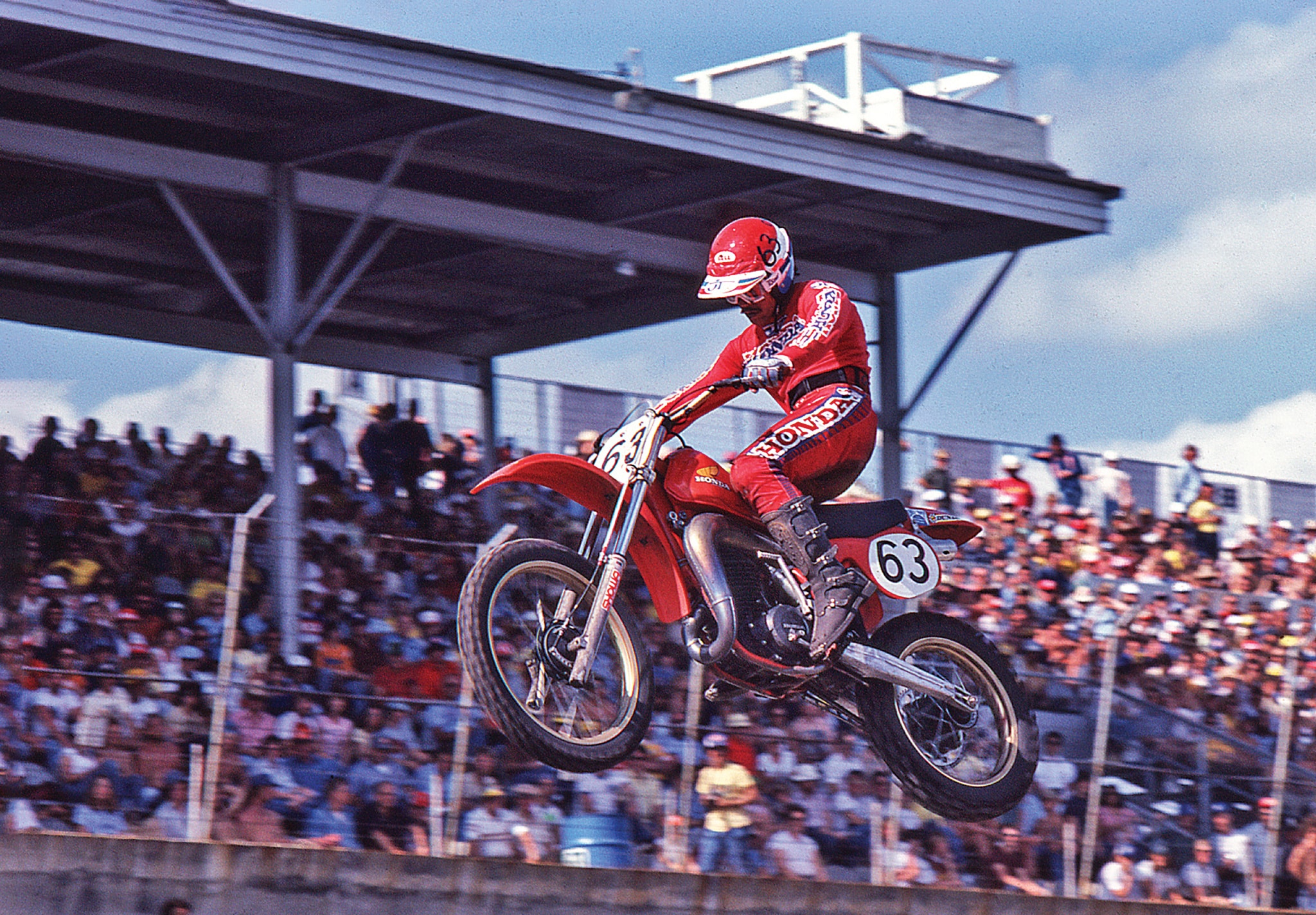 Husqvarna let Chuck out of his Husky contract so he could sign with Honda for 1980.
Husqvarna let Chuck out of his Husky contract so he could sign with Honda for 1980.
WHAT WAS THE TURNING POINT THAT GOT YOU TO TURN PRO? I was getting good enough racing locally that the Expert class was now calling because of the 100-percent payback. I still bought my bikes, but I made enough money to make all the payments. I would sell them and get new bikes every season. The AMA Nationals were not on my radar.
I was excited about making good money on the local level. One of the first big experiences as a pro was when a fellow came up to me and he said, “Dude, the Northwest would like you to represent us at a big race coming up.” He asked me, “Have you ever heard of Evel Knievel?”
I said, “No.” We ended up doing a deal, and it turns out that he was going to pay all my expenses and take me to the famous Snake River Canyon Evel Knievel race. We went to the race, and I was totally enamored. All the best guys were there—Tripes, Pomeroy, Karsmakers, Jones, Smith, DiStefano and everybody you could name. It was incredible. I smoked my qualifier, even passing John DeSoto. I did not know anybody yet; I just held it wide open.
My bike broke, but since it was not an AMA-sanctioned race, the promoters said, “Hey, your speed was great, you are in.” I ended up ninth in the second moto, so a top 10 as an absolute rookie was good.
Then, as a privateer in 1977, I rode the 250-support class in the 500cc Trans-AMA series. They called it the 250 National class, and all the factories threw in their 250 guys in there. Yamaha sent Mike Bell and Broc Glover. Rich Eierstedt was Team Honda’s 250 ringer, and Kenny Zahrt was there on a Bultaco.
WHAT BRAND DID YOU RACE IN THE TRANS-AMA SERIES? All the factories really wanted to win the Trans-AMA title. I was getting parts and bikes from Husky, so that was a help, but I was a complete privateer rider. I hung out with Howerton’s mechanic, Eric Crippa, who showed me all the Husky tricks. One day, he handed me a special cylinder from Sweden. That series was amazing for me, and I ended up beating all the factory guys and winning that 250 fall series as a privateer. That was pretty satisfying to me.
DID THAT EARN YOU A SPOT ON FACTORY HUSQVARNA? Husqvarna picked me up and made a poster of me, which I was thrilled about. That performance bagged me a sponsored ride for the next year, but it was not until 1978 that I got a full-fledged contract. Part of that was because Howerton was their man at Husky, and he had left to go to Suzuki.
WAS THAT A TURNING POINT FOR YOU? I was making a living racing, but getting a contract meant a greater opportunity to have additional support and paid expenses to increase my income. It was an awesome opportunity to continue to grow. I finished third behind Bob Hannah and Jimmy Ellis that year in the Supercross series. I got to go to Europe for the last three Grand Prix races, and I led the Russian Grand Prix, which was super cool.
I DIDN’T REALIZE YOU RACED IN EUROPE WHILE WITH HUSQVARNA. I went to the last three GPs in Sweden, Finland, and Russia. All I wanted to do was race, and that trip influenced me to make decisions based on how the Swedes did it. As a young man you are thinking, “They are the winningest brand with 13 World Championships, and I am going to do what they are doing.” So, I signed a contract with Husqvarna for the next year.
THAT FIRST YEAR WITH FACTORY HUSQVARNA DIDN’T GO THAT WELL, DID IT? I broke my wrist at the beginning of the season, and that was after I lacerated my leg at Lake Whitney. Then I tore my knee up, which topped three major injuries within nine months. It pretty much spelled the end of my career. I was worried about what I was going to do for a living, but it turned out that Husky gave me one more chance to go to the Trans-AMA. No expenses, no salary, but they sent Eric Crippa to go with me, and I won a Trans-AMA moto.
I went from the bottom of the barrel to one of the most sought-after riders that fall. When you win at the Trans-AMA series, it is late in the season and the team managers are all looking for new talent. I signed with Honda because one of my all-time heroes, Roger DeCoster, was leaving Suzuki and going to be the Honda race team manager. I just thought that was an amazing thing.
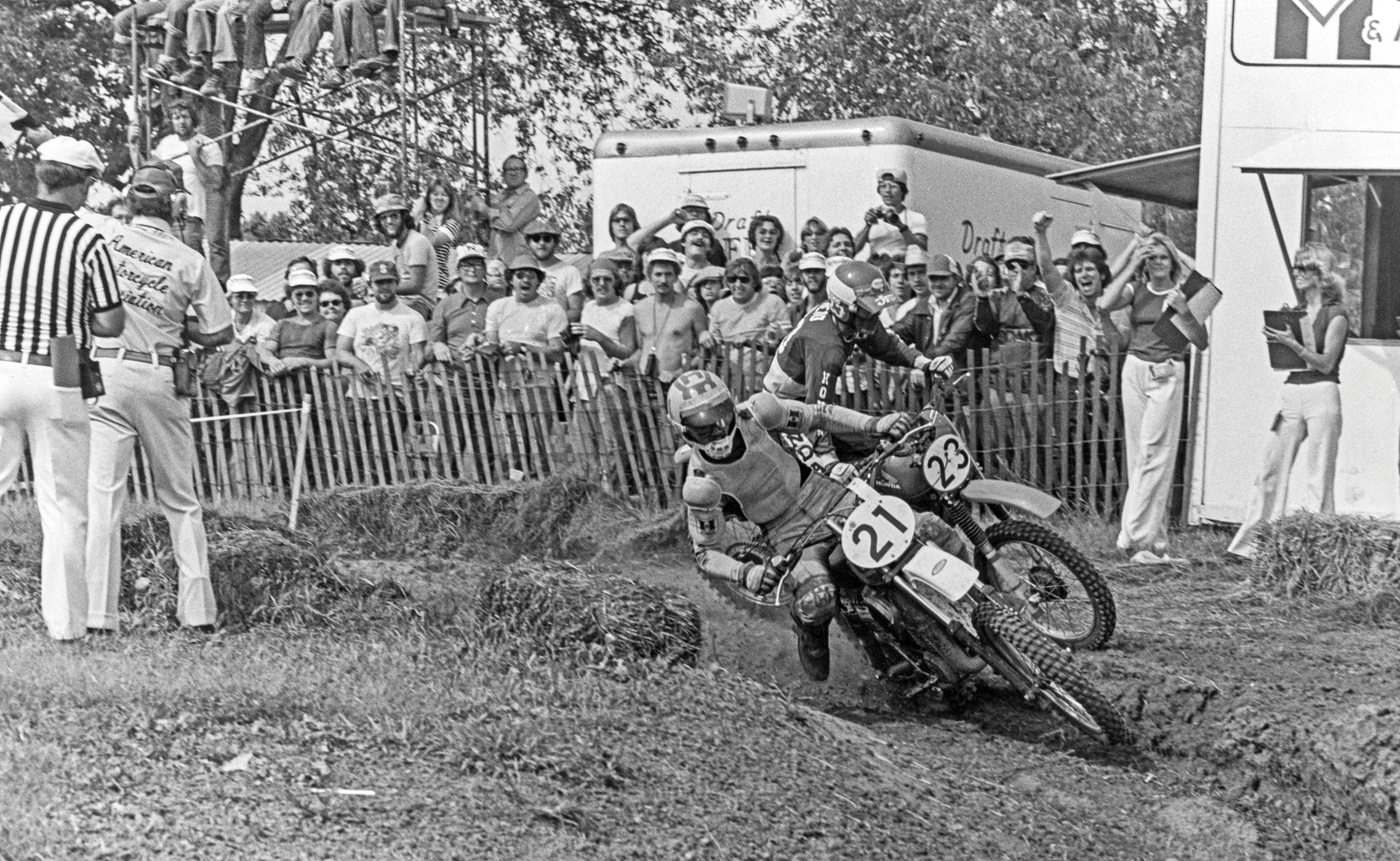 Chuck (21) and Warren Reid (23).
Chuck (21) and Warren Reid (23).
WHAT YEAR DID YOU LEAVE HUSQVARNA FOR HONDA? In the fall of 1979. It was after a full season on Husqvarna. Husqvarna was nice and let me out of my 1980 contract so I could go to Honda. I raced the Anaheim Supercross, which was in November that year. It was odd timing. I got to get a taste of what that bike was like at a Supercross.
WERE YOU TALKING TO ANY OTHER TEAMS? Brad Lackey and his Kawasaki team invited me to ride their works Unitrack bike at Unadilla after I won at Mid-Ohio. I took them up on it on Monday to see what these factory Kawasaki bikes were all about.
I jumped on Brad’s 420, which was the very first year of the Unitrack single shock, while I was still on twin shocks. I said, “There is no way his engine is going to be as good as mine.” When I got on the bike, immediately, I said, “Oh my God, this thing is good.”
It was one eye opener after another. I was beside myself on how good the bike was—suspension, handling and power. I was very close to signing with Kawasaki, but the Honda allure was too much. Although, that was a huge risk, as Honda did not have a single-shock bike yet. They still had twin shocks, but they said that they had a single shock coming. It was all because Roger DeCoster was there, plus they hired Eric Crippa to be my Honda mechanic, so I took a gamble. Kawasaki would have been great, too.
Brad Lackey could have been World Champion in 1979. He won more motos than anybody, but his bike broke in half a couple of times, and Graham Noyce was coming on strong with the big Honda.
OBVIOUSLY, HONDA WAS A GREAT CHOICE, AS YOU WON THE 1980 AMA 500 NATIONAL CHAMPIONSHIP! We tested as much as we could, I trained harder than ever, and nothing was going to stop me. I rode it in a field for the first time, and I came in and talked to Eric and said, “Dude, this thing is amazing. We must work on a few things, though. The front end is diving, and we have to get the forks set up for our tracks.” It was fantastic, riding the works Honda with the parts they built. It was incredible, but took a lot of work to get it set up right. I won both motos at Mount Morris that year. Mount Morris was almost like a second home track for me>
AND YOU WON A COUPLE OF SUPERCROSS ROUNDS, RIGHT? Yes, and I finished third in the 1980 Supercross series behind Mike Bell and Kent Howerton. I did win the Atlanta Supercross. It was sweet to win there. Growing up in rural Oregon, I had barely been in a stadium before, and it was a chance to make more money, which was great, but deep down most of the riders knew that the real game was the outdoors. We always held a little bit back to be ready for the outdoor Nationals. When the 1980 500 Nationals started, I won at Mt. Morris, Atlanta Motor Speedway, Sears Point and Washougal, then I did the L.A. Coliseum Supercrosses two weeks in a row, and then went back to the 500 Nationals to win at Broome-Tioga to wrap up that title.
BUT, 1981 WASN’T AS GOOD? Broc Glover caught me flat and won the first three 500 Nationals. Eventually, I started winning, and it came down to Washougal where we were only a few points apart. I needed to score every point possible at Washougal. I started last, and Broc and I were scrapping. It went down to the last lap, and my throttle stuck and launched me over the jump that they later christened as the “Chuck Sun Jump.” It was there for 30 years. Sadly, I tore my ankle up severely, and I had to miss the last race, but I placed third in the 1981 500 Championship.
YOU WERE ON THE WINNING 1981 MOTOCROSS DES NATIONS TEAM, RIGHT? Yes, but I was not completely healed after my Washougal crash in 1981, but I wanted to be on the team more than anything. So, I had Jeff Spencer tape my ankle up like a cast and the rest is history. We walked away with the MXDN and Trophée des Nations wins, which was an incredible experience. In many respects 1981 was a bigger year for me than 1980.
WAIT, TELL ME ABOUT THE 1981 USGP AT CARLSBAD! Marty Moates was the first American to win the USGP in 1980. We were privateer buddies, and I stayed with him before the 1981 USGP. Team Honda really wanted me to use the European factory Honda 500 engine, and keep in mind, I was 160 pounds. I did not like wrestling around that big monster engine. Andre Malherbe was six-foot-two and a powerful European rider, and they insisted that I use the 500 engine he used. So, Crippa and I snuck behind the hotel, and he shoehorned my 476cc engine from the AMA National series into the frame. There were so many things against me on that day. Moates had unplugged my alarm clock, so I was late and barely got there in time because I got stuck in race traffic. I pulled over, unloaded my practice bike, grabbed my gear bag, and I rode to the track. Luckily, I had put my jersey on, because the security guard wasn’t going to let me through the gate for timed practice.
The bike was all over the place in the first moto, so I only got a fifth. I came in and told Eric that we had to make major changes. We completely changed the suspension between motos, and in the first two turns I felt the change, and I was able to catch up and pass the current 500 World Champion, Andre Malherbe. I only had to beat one other rider and that was Brad Lackey, who was right behind me. I was able to stay ahead of Brad to become the second American to win the U.S. Grand Prix at Carlsbad.
It was one of the most satisfying wins for me. I am from the Northwest where we have this fertile, deep soil and loamy berms, while Carlsbad was typical blue-grooved, hard-packed dirt, and it was so satisfying to be able to ride on that and win. It was the only televised motocross race at that point in the world with “ABC Wide World of Sports.” So, that was another little nugget; although, it did not play until six months later.
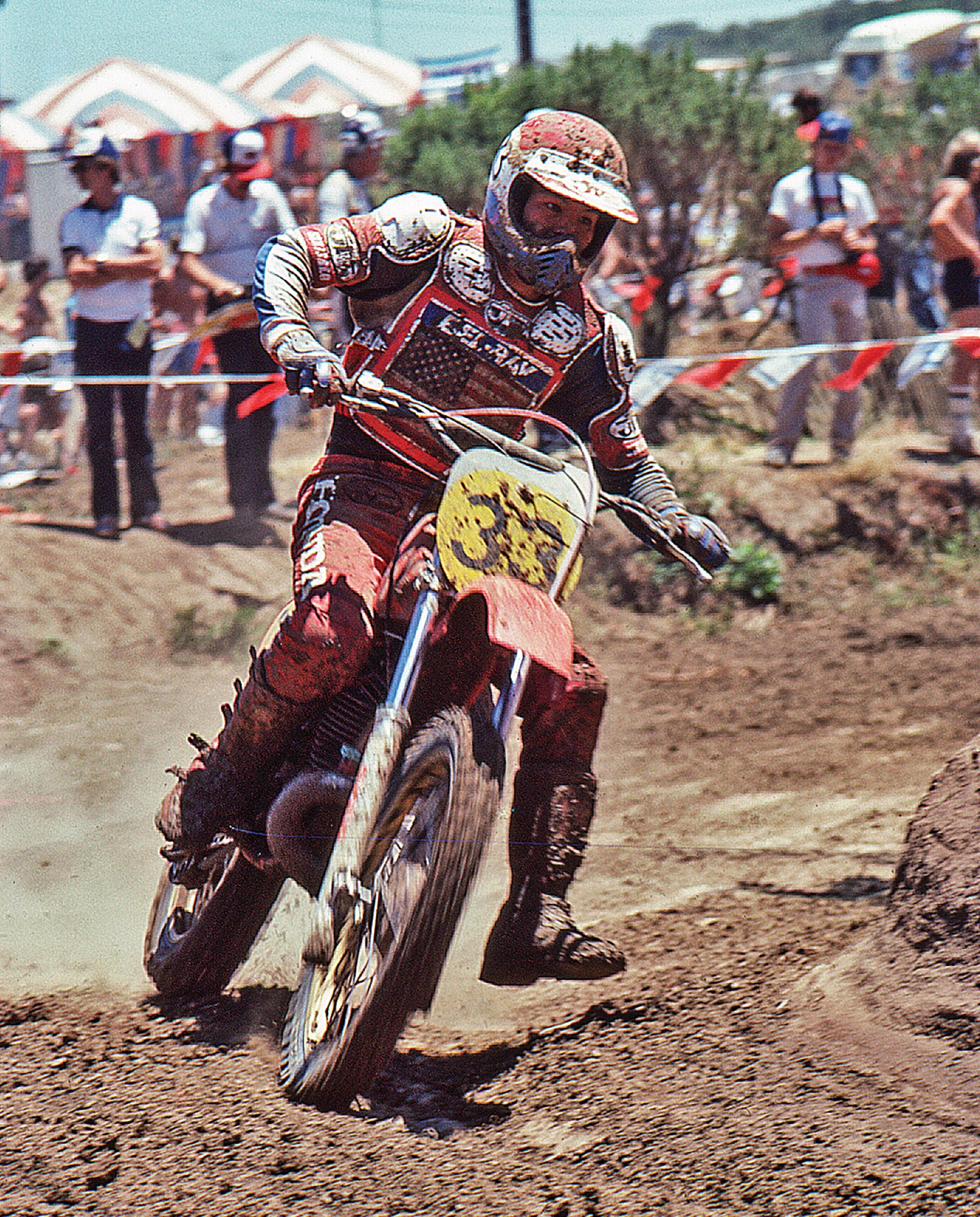 Chuck won the 1981 USGP at Carlsbad to become only the second American to win the USGP.
Chuck won the 1981 USGP at Carlsbad to become only the second American to win the USGP.
WHY WASN’T 1982 AS SUCCESSFUL? I was really enjoying things at the top, but it was now beginning to feel like a very long season. I would ride the Florida series in the beginning of the year to get in shape, and that turned out to be good for the outdoor but did nothing good for the Supercross series.
I was on the verge of being burned out. I did not really have anybody to talk to about this. Roger said, “Read some books.” This was good advice because it helped me chill out a little bit. I was sick after I won at Carlsbad. I overcame it quickly with the euphoria of a win, and while on a plane, I started looking at other passengers, thinking, “People are making a living doing other things. Maybe I could do that, too.”
“I WENT FROM THE BOTTOM OF THE BARREL TO ONE OF THE MOST SOUGHT-AFTER RIDERS THAT FALL. WHEN YOU WIN AT THE TRANS-AMA SERIES,
IT IS LATE IN THE SEASON AND THE TEAM MANAGERS ARE ALL LOOKING
FOR NEW TALENT.”
I may have begun to leak out some of that sentiment to management who asked, “What do you want to do?” Throughout the season I was thinking, “Maybe I am going to wrap this up.” I was not giving it my full, complete effort, although I still got second in the 500 outdoor Nationals. Darrell Schultz was a beast that year. He was hired by Honda, and he was using the big engine. By now I was switching back and forth between the 476 and 500. Darrell was a bigger guy and could handle the power. It came down to just a few points and he won. I wish I would have had more counseling in that respect. After the season I rested and I was fired. I signed a deal with Maico and I was excited again.
TEAMS ARE ALWAYS LOOKING FOR THE NEXT BIG THING—TRUE? Certainly, they are. I have always felt that the teams did not stick with one guy long enough. All the companies were happy to switch out riders quickly and hire the latest, greatest thing. It is a brutal sport in that respect. You are measured by your last race, but everybody dealt with the same thing.
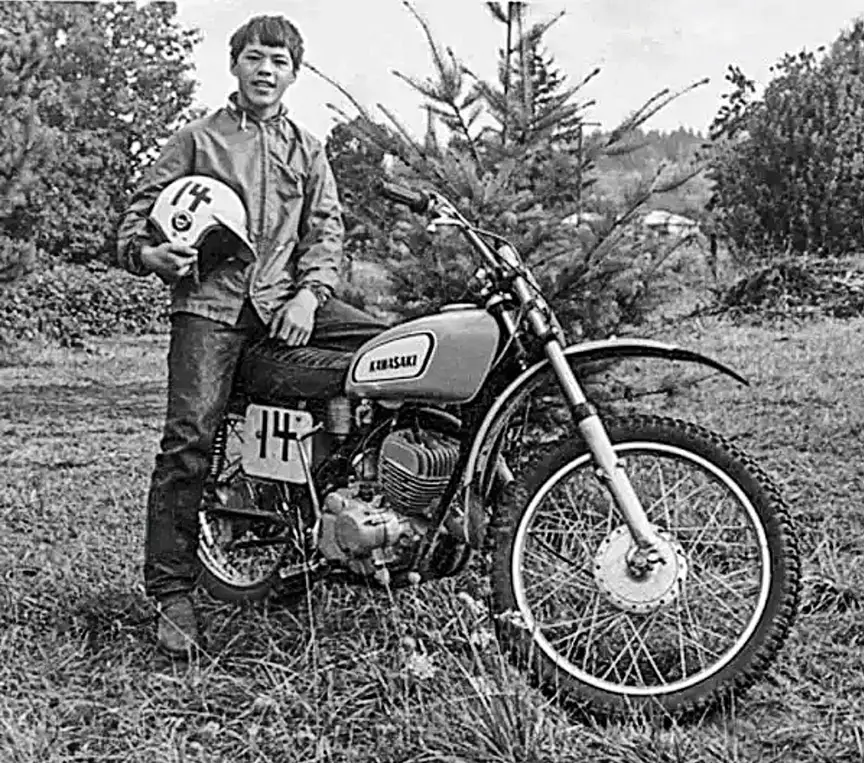 Fourteen-year-old Chuck Sun with the first bike he ever raced.
Fourteen-year-old Chuck Sun with the first bike he ever raced.
HOW WAS MAICO IN 1983? The first race we went to was the opening 500 National round at Hangtown, and I was fifth in the first moto. Maico was excited that we had a top five. It was a special frame, and it was a cool bike with a lot of power, but there were lots of little problems: The brakes would stick on; the brake lever broke off one moto; and the engine was powerful but was slow-revving, making it difficult to keep momentum up. Within two races they went bankrupt in Germany.
My contract was with a German representative, and they had given me an advance of $20,000 for expenses to do the 500 Nationals. They asked for a portion of it back. I considered it for a day and sent them a check. Fair enough. That was that. Later a dealer in Portland loaned me a Honda CR480 production bike, which ended up being one of my favorite bikes. I did a handful of races and did well, but I probably wasn’t giving it 100 percent. I got out with a healthy body, and I have been riding ever since.
WERE YOU DISAPPOINTED IT ENDED THAT WAY? No. I was 25 years old and I wasn’t bummed out. I had a chunk of change, but I did have to start selling a few things. I was just a bit naive and figured something would come up. I started getting into a few other things, and then saw my buddy was doing municipal bonds, and I thought that was cool. I got my license and started being a stockbroker, which was exciting. If only I would have sat down with somebody and had a better plan psychologically, because I realized too late that I had a couple more years of racing left in me.
I WAS REALLY EXCITED ABOUT THE FOUR-STROKE MOVEMENT. I WAS AT KTM AND HUSABERG FOR 10 YEARS. THERE ARE A LOT OF THINGS THAT HAPPENED THERE THAT WERE A LOT OF FUN. BASICALLY, I RODE A LOT.
DIDN’T YOU JOIN KTM FOR A WHILE?I always enjoyed that flow feeling you get with riding and nothing ever seemed to replace that. I stumbled across KTM when they had the four-stroke Husaberg. I rode one and said, “Man, this is good as my works bike. I was really excited about the four-stroke movement. I was at KTM and Husaberg for 10 years. There are a lot of things that happened there that were a lot of fun. Basically, I rode a lot.I had different titles while there, but was primarily a regional sales manager in the Northwest. But, my job title was continually changing, and later I became the director of Husaberg nationwide and ran that division. I also ran their four-stroke race team, and we won championships with Mike Young, Lance Smail and Shawn Kalos. That was when they did the first-ever four-stroke National series and now, of course, four-strokes are the thing.After KTM I was a national sales specialist for Tucker Rocky, specifically for Malcom Smith Products (MSR). I had a lot of fun doing that, but I was back in the corporate world and just ran myself ragged because I had the whole country. I ran it a little bit too hard and got burned out a little too much. That lasted three years.
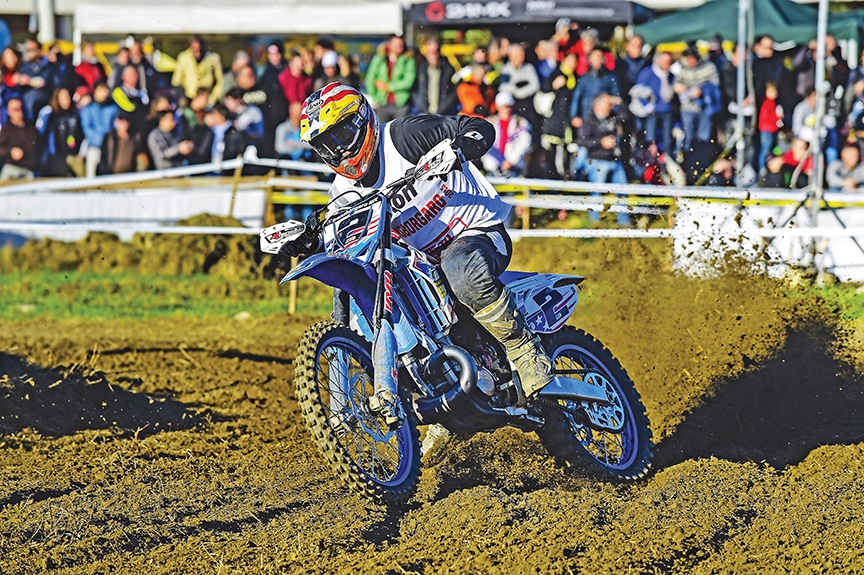 Chuck may have ridden to fame on Huskys and Hondas, but loved riding TMs, Husabergs and KTMs after his AMA pro days came to an end.
Chuck may have ridden to fame on Huskys and Hondas, but loved riding TMs, Husabergs and KTMs after his AMA pro days came to an end.
DID YOU FIND IT STRANGE THAT TUCKER ROCKY ASSIGNED YOU TO WORK WITH MALCOLM SMITH, THE GUY THAT GOT YOU INTO THE SPORT? Isn’t that funny. This sport is massive in its reach, and yet it is still small in that it can reach out to the different people and go full circle back to when I was 14 years old and became totally immersed in “On Any Sunday.” When I worked with Malcolm at Tucker Rocky, I always felt very fortunate to be able to hang out with him.
ARE YOU RETIRED NOW? I am pretty much retired. I have my little Social Security, and I spend the summers in Idaho, Oregon, and Montana, basically riding with groups of people on the trails. Riders come to Gold Creek Lodge in Idaho, and I am in the mountains riding all summer long. It is much better being out there playing than in an office.
SOUNDS GREAT! I am not a weekend warrior; I ride every day of the week, and it is a full-on lifestyle. Let’s pretend that I had all the money in the world; what would I do? This is what I would do.
RIDING HAS GIVEN YOU MUCH MORE THAN A CAREER, HASN’T IT? I think going to Europe was an amazing experience. When you go to Europe as a racer, you see it from a completely different perspective. I started out in a 1965 Chevy truck with a trailer. I looked at the AMA race schedule and the first race was in Atlanta, all the way across the U.S., and it was my first great adventure. It was no hardship to be a privateer. It was like, “Oh my God, look what we can do. We can go to campgrounds and camp out, and find riding areas along the way.” I was completely immersed in my passion. To this day, I am not necessarily satisfied being in one place. I want to go where the ride is at.


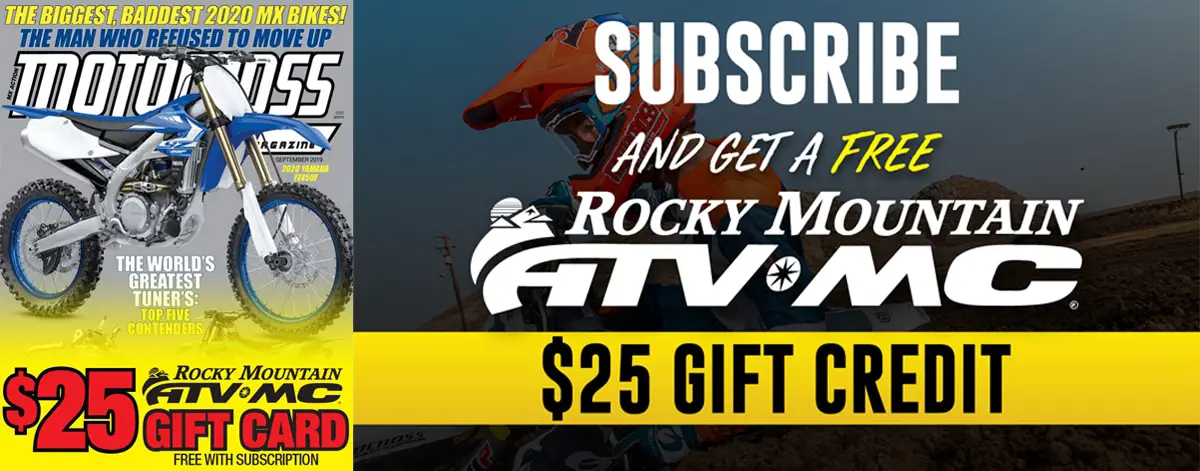
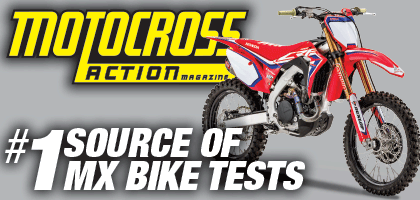


Comments are closed.